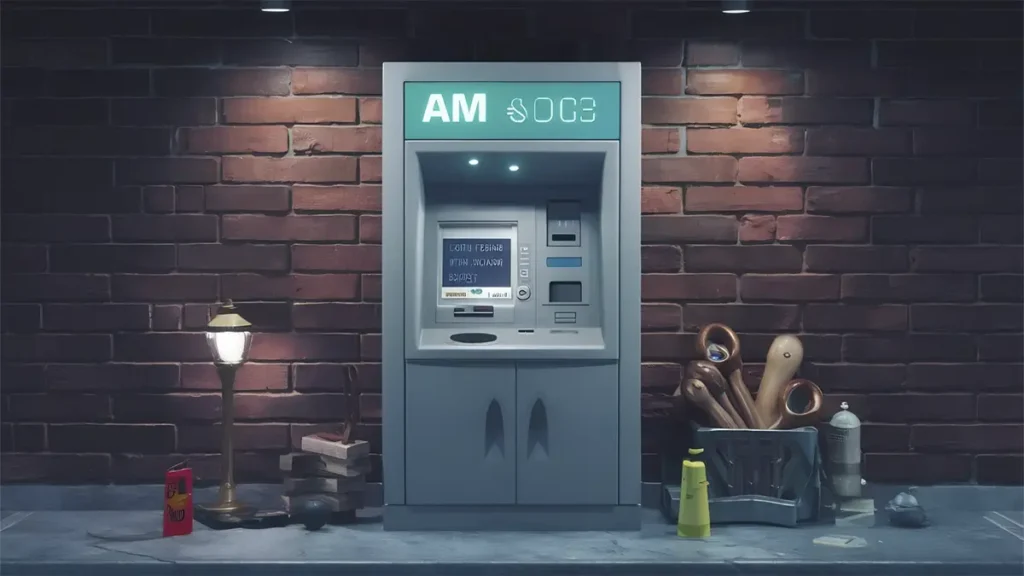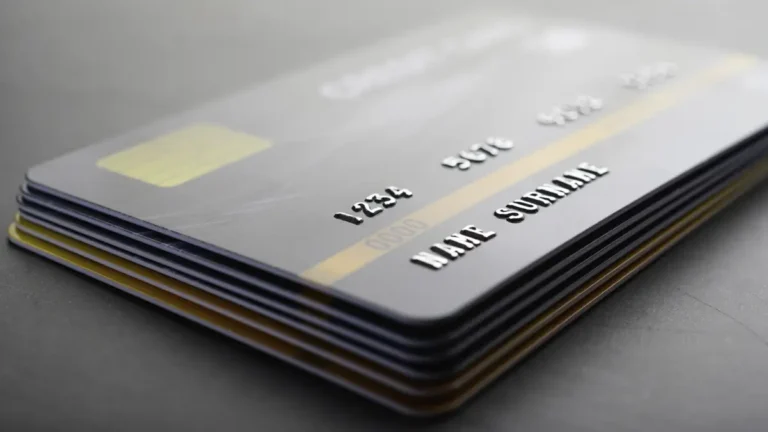How Much Money Can You Make from an ATM Business in 2025
Many people ask how much money an ATM can earn since passive income becomes more popular. An ATM is not just a cash dispenser. It works like a small business, collecting a fee every time someone withdraws money. The fees may seem tiny, but if many people use the ATM, they can add up to steady money.
The best part is that the machine keeps working even when you are not around. More than 2 million ATM machines operate in the US, handling about 10 billion transactions each year. That shows cash still matters, even with mobile payments and digital wallets.
This article will show how much money can you make from an ATM business in 2025.
How Much Does an ATM Make on Average?
Usually, an ATM earns $300 to $600 each month. The location and number of users affect this. If many people use an ATM, it can earn a lot more. An ATM’s earnings depend on the number of transactions and the transaction fee. Most machines charge between $2.50 and $3.50 per withdrawal. If your ATM gets 200 users in a month at a $3 fee, that’s $600 in revenue.
Breaking It Down
- Per-transaction fee: $2.50–$3.50 on average
- Daily transactions: 5–20 in small locations, 50+ in busy areas
- ATM earnings per month: Typically $300–$600, sometimes $1,000+ in high-traffic spots
For example, a convenience store ATM with 10 users a day at a $3 fee would make about $900 a month. A quieter café might see only 50 users in an entire month, earning closer to $150.
Why Location Matters
ATMs in shops, gas stations, and bars bring in the most money since cash is still often used. A finance blog on ATM businesses put it: “An ATM is only as good as the foot traffic it sees.”
Key takeaway: An ATM makes money based on two things: its location and the fee you charge. Always think about how many people will need cash at that location.
Key Factors That Affect ATM Earnings

An ATM earns money based on its spot, the fee per use, and how often people use it. Things like the kind of ATM, the cost to fix it, and other ATMs nearby also matter a lot. The money from an ATM comes from how often people use it and the charge per use. Let’s break it down.
Surcharge Fees and Pricing Strategy
The fee you set directly affects revenue. Most ATMs charge $2.50 to $3.50. If the ATM is in a busy spot, a $0.50 extra fee can significantly increase profits. When the fee feels big, some customers may skip your ATM and find a cheaper one.
Machine Type and Technology
Not all ATMs are the same. New ATMs with EMV chips and cash recyclers often get chosen by banks and businesses. They’re also more secure, which builds customer trust. Good technology can stop many problems and make your machine work better.
Competition Nearby
Competition plays a big role. If there are three other ATMs within a few steps, your machine may not be used as much. On the other hand, if you’re the only ATM in a high-demand area, you’ll capture almost all of the traffic.
Main point: The money your ATM earns depends on its spot, the fee, the type of machine, and nearby ATMs.
Startup and Operating Costs for an ATM Business
Starting an ATM usually costs $2,000 to $10,000, depending on the kind of ATM, the cash it carries, and where you put it. The ATM is usually the largest cost when you start this business. Most ATMs cost around $2,000 to $8,000. ATMs with fancy features cost more. Basic ones cost less.
Other expenses include installation, software setup, and service fees. Many ATM owners put money aside for upkeep and repairs. On top of that, you need working cash in the machine, known as the cash float. It can cost between $1,000 and $5,000 depending on the location. For details, you can check out all the details on how to start an ATM business.
Cost Breakdown Table
| Expense Category | Typical Range |
|---|---|
| ATM Machine Purchase | $2,000 – $8,000 |
| Installation & Setup | $300 – $1,000 |
| Maintenance/Service Contracts | $200 – $500 per year |
| Cash Float Requirement | $1,000 – $5,000 |
According to SBA.gov, successful small businesses plan for both startup and recurring costs. ATM owners can lose money if they forget about costs for loading cash or servicing the machine.
Key takeaway: The true cost of owning an ATM goes beyond just buying the machine. Planning how to set up, maintain, and keep cash ready can help you make steady money.
How to Calculate Your ATM Business Profits
To find your profits, subtract your costs from your total fees. Profit margins in the ATM business are usually 15–30%. Your earnings depend on users, fees, and running costs.
The Profit Formula
The easiest way to figure out ATM business profits is with a simple formula:
Transactions × Surcharge fee = Gross revenue – Costs = Net profit
ATMs earn when people withdraw money, but you spend part on fixing and the internet.
Step-by-Step Example
Let’s walk through a basic scenario:
- Your ATM processes 200 transactions in a month.
- You charge a $3 surcharge fee.
- Gross revenue = 200 × $3 = $600.
- “Subtract costs (say $100 for maintenance and network fees).”
- Net profit = $600 – $100 = $500 profit for the month.
Why This Matters for You
This calculation helps you set realistic expectations. If your machine is in a high-traffic spot like a gas station, your profits may sit at the higher end of that 15–30% range. In quieter areas, margins can shrink fast.
Important note: Make sure the place has enough people and low costs before you choose it.
Pros and Cons of Running an ATM Business
Running ATMs can earn money passively and grow, but you can face theft, broken machines, and bad spots. Seeing the pros and cons of owning an ATM helps you decide if you want one.
Pros of an ATM Business
- Passive income: Your ATM earns money 24/7 with very little daily work.
- Scalable: You can start with one machine and add more as you grow.
- Low time commitment: It takes just a few hours weekly to refill money and check the machine.
Cons of an ATM Business
- Upfront costs: Buying machines and keeping them stocked with cash requires money.
- Theft risk: ATMs can be stolen from or vandalized, especially in unmonitored areas.
- Location risk: If your ATM is in a bad spot, it will get fewer users and less profit.
Key takeaway: With the right spot and proper management, an ATM can be a steady source of income.
Is an ATM Business a Good Investment in 2025?

Yes, ATMs can still make a profit in 2025, especially in spots where many people need cash. Digital wallets are growing, but cash use has not disappeared. ATMs are important in gas stations, shops, and villages where cards are not always accepted.
Industry reports show that cash remains a preferred payment method for smaller transactions. Industry data shows that in 2025, many people use ATMs daily, especially where cash is preferred. That means there is still room for profit if you choose smart locations.
Why ATMs Still Make Sense in 2025
Steady demand: Around 10 to 15 percent of US transactions are still cash-based.
Underserved markets: Rural towns and cash-driven businesses often lack enough ATMs.
Scalable model: Owners can expand by adding more machines in high-traffic spots.
What to Watch Out For
Digital payments: As mobile wallets grow, long-term demand may decline.
Regulations: Compliance rules and banking partnerships may affect new investors.
Location risk: A poor placement could mean low usage and slower payback.
Main point: In 2025, an ATM business can work well if you put machines where people often need cash.
Steps to Start an ATM Business
An ATM business starts with picking a machine, putting it in a busy spot, and keeping it full of cash. You’ll also need to handle compliance requirements and build agreements with store owners. Done right, this can be a steady income stream with relatively low daily work.
Step 1: Research ATM Models and Costs
Look into different ATM models and compare features. A simple ATM costs about $2,000, but fancy ones with extra features can cost $6,000 or more.
Step 2: Find Profitable Locations
Your ATM will do well if many people walk by. Gas stations, busy retail shops, and nightlife spots often bring steady usage. Always look at how many people pass by daily before signing a deal.
Step 3: Negotiate Placement Deals
Work with business owners to place your machine. Please pay them a small monthly fee or share a portion of transaction revenue. Clear contracts help avoid future disputes.
Step 4: Register and Stay Compliant
Register your business with state and federal requirements. Make sure your machine meets ADA accessibility rules and EMV compliance standards. For guidance, check SBA.gov and FDIC.gov.
Step 5: Secure Cash and Monitor Transactions
Keep enough cash loaded so the machine doesn’t run out of money. Many ATM owners check balances through online monitoring tools and refill as needed.
Key takeaway: An ATM business works best when the machine is in a busy spot and always has cash.
Conclusion
The ATM business can give steady money if you pick good spots and control costs. An ATM usually brings in $300 to $600 every month, and machines in crowded spots can earn extra. To earn money with ATMs, you must count startup costs, cash on hand, and upkeep.
Location is the biggest driver of success, and a poor placement could mean low returns. Even with digital payments on the rise, cash is still widely used. In the US, people use ATMs billions of times each year, showing they are still in demand. An ATM business is a good fit if you want a steady income with little daily work. The key is careful planning, realistic expectations, and a focus on high-traffic areas.
How much an ATM earns depends on users, fees, and location. The better your placement, the more likely you are to see consistent passive income.






